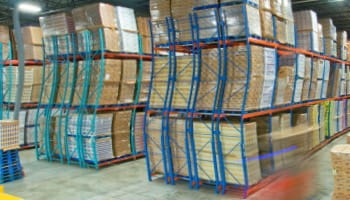Earthquakes and Pallet Racking
Keep your Storage Racks Standing Tall during an Earthquake
You may not feel it, but the earth beneath us is constantly moving. Despite common misconceptions, one does not need to reside along the West coast of the country to be vulnerable to earthquakes. Like many other structures, building codes in Canada and the US require that storage racks be properly engineered to withstand the forces resulting from ground motions during a seismic event.  Earthquakes can release a significant amount of energy and a properly designed rack system will indeed absorb this energy to prevent collapse. As one can imagine, rack collapses cause havoc for warehouses and distribution centers while posing a real risk to life safety.
Earthquakes can release a significant amount of energy and a properly designed rack system will indeed absorb this energy to prevent collapse. As one can imagine, rack collapses cause havoc for warehouses and distribution centers while posing a real risk to life safety.
The ability of the rack to remain standing during an earthquake can only be discovered through physical testing of rack components and their connections coupled with compilation of test data to perform a rigorous seismic analysis. Providing accurate geographic site locations, soil classification and product load statistics based on average stored loads and rack occupancy will assist engineers in accurately calculating the seismic forces acting on the rack. One can expect heavier post and brace sections, greater attention to connection details such as welds and anchorage, and higher post loads for rack structures installed in areas of moderate to high seismicity.
Proper installation and maintenance of storage racks in seismic-prone areas are also very important to ensure that these structures perform as originally designed without compromise. Maintaining a spatial separation between the rack structure and building components is needed to prevent colliding with one another during an earthquake. If you have any questions regarding seismic compliance of your rack system, contact the storage professionals at Johnston Equipment and be confident that your racks will stand tall during an earthquake!


